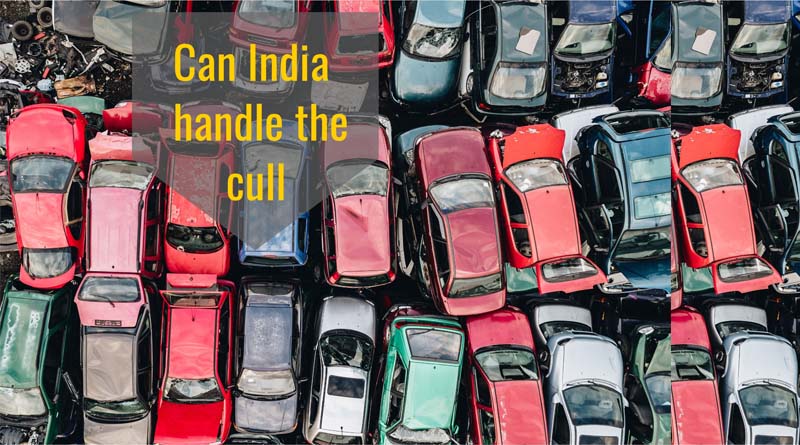

Finally, National Scrappage Policy
Sometime back, India apparently eased into 3rd place on the auto rankings globally, as the third largest market in the world, after China and the US. But even as the country has made giant strides in its market size, it has lagged behind when it comes to coherent policies with regards to scrapping old, polluting vehicles, and even holding the industry to any worthwhile standards when it comes to waste, recycling and reuse. This has been blamed on two factors. The fact that the biggest part of this growth has happened in the past decade, giving policymakers relatively little time to make a long-term call. Secondly, and this is more disputed is the widely held belief that with owners using their vehicles far longer than global norms, the ‘extended’ life of vehicles in India needed a different approach from the usual ‘cash for clunkers’ or outright scrapping policies seen elsewhere.
With the news filtering out that the final version of the new policy, which had been sent to the PMO for approval, has been returned with more suggestions, means that an actual policy is still some time away. Among the key suggestions is a directive to involve the states more intensively in the process, a surefire recipe for delay, and notably, shifting the ‘costs’ of the scheme to manufacturers, rather than direct incentives from the government. Finally, instead of being a compulsory scheme as the transport and road ministry had envisage, is the desire to make it ‘voluntary’. Almost all the suggestions point to a high probability of the scheme being a non starter, as every ‘suggestion’ is a death blow to speed and response, going by previous experience.
As of now, only the following broad assumptions can be made on the national scrapping policy, as and when it comes into free.
Right on top is the certainty that the act will not cover private vehicles. This is because the biggest contributor to pollution are medium and heavy commercial vehicles (MHCV’s), and they will remain the focus of any policy move.
April 1, 2020, was the date that was quoted regularly in earlier meetings, and while the date is still a possibility, there is an increasing probability of the date getting pushed by up to a year, with every month of delay.
Most importantly, and perhaps the most justified reason for the delay, is the establishment of some sort of infrastructure for scrapping the huge number of vehicles that are due for scrapping, anything between 350,000 per year to 7 million eventually, depending on the final conditions of the policy. This valid simply because with limited to zero formal infrastructure in place, the risk of vast ‘graveyards’ of scrapped vehicles lying around is very high. The industry will need to get far more proactive in taking the initiative here to collect, recycle and reuse as far as possible.
For now, it seems safe to say that like all ‘tough’ or potential unpopular decisions, it could yet go the judicial way, with the NGT or even the Supreme Court passing orders at some stage to hurry this along. A pity, really, that it should even be a consideration, far from being a very serious one.
In a significant move toward advancing green energy and industrial growth in the state, Himachal…
Golabl chemical conglomerate BASF has announced that its now offering the world’s first biomass-balanced polyethersulfone…
In a crucial stint to bolster the biogas sector and sustainable dairying in the country,…
TotalEnergies SE has received approval to proceed with its Middlebrook solar and battery project in…
Andhra Pradesh Chief Minister Chandrababu Naidu has inaugurated the Rs 1,000-crore green hydrogen plant of…
The BITS Pilani has developed an innovative solution for managing landfill leachate, domestic septage, and…